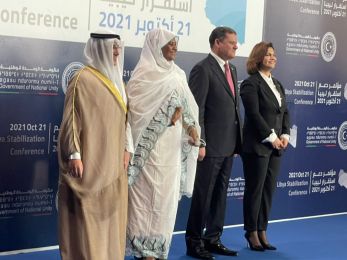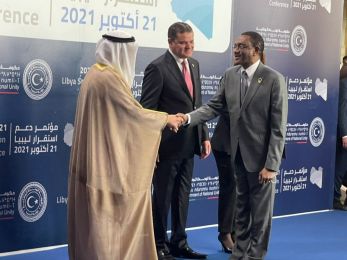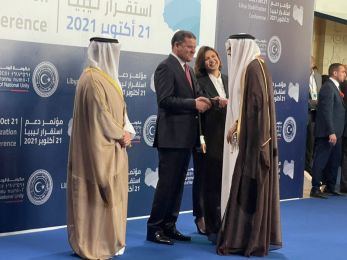PANAPRESS
Panafrican News Agency
Kenya: Poverty trap leaves LDCs further behind - UNCTAD report
Nairobi, Kenya (PANA) - Global poverty is increasingly concentrated among a group of 48 countries, which are falling further behind the rest of the world in terms of economic development, according to a United Nations report released on by UNCTAD.
The Least Developed Countries Report 2016: The Path to Graduation and Beyond – Making the Most of the Process states that a global goal to halve the size of this group will be missed unless the international community takes more action.
"These are the countries where the global battle for poverty eradication will be won or lost," said UNCTAD Secretary-General Mukhisa Kituyi, launching the Report, according to a statement obtained by PANA on Thursday.
"A year ago, the global community pledged to 'leave no one behind', but that is exactly what is happening to the least developed countries (LDCs)."
The statement said the proportion of the global poor in the 48 LDCs has more than doubled since 1990, to well over 40 per cent.
Their share of those without access to water has also doubled to 43.5 per cent in the same period. And these countries now account for the majority (53.4 per cent) of the 1.1 billion people worldwide who do not have access to electricity, an increase of two-thirds.
In six LDCs, the rate of extreme poverty is between 70 per cent and 80 per cent, and in 10 more the rate is between 50 per cent and 70 per cent. There are only four other countries in the world where the rate is above 30 per cent.
The statement said this leaves many LDCs stuck in a poverty trap, a vicious circle in which poverty leads to poor nutrition and health, and lack of education, undermining productivity and investment. This in turn blocks the sustainable development needed to reduce poverty.
The Report therefore calls for improvements to such measures, for example:
- Fulfilment by donors of their long-standing commitments to provide 0.15–0.20 per cent of their national income for assistance to LDCs, to make aid more stable and predictable, and to align it more closely with national development strategies.
- Faster progress towards 100 per cent duty-free and quota-free access for LDCs' exports to developed country markets.
- Renewed efforts to break the stalemate on special and differential treatment for LDCs in World Trade Organization negotiations.
- Full and timely operationalisation of a technology bank for LDCs in 2017, with adequate financing and due regard for each country's level of development.
- Improved monitoring of technology transfer to LDCs.
- A more systematic, smooth transition process for graduating countries, to limit the impact of losing access to international support measures when they graduate.
The statement said countries can only break out of vicious poverty circles with international support in finance, trade and technology. The LDC category was created largely to target such support for those countries that most need it.
Countries graduate from the LDC category by satisfying a complex set of economic and social criteria. But only four countries have graduated in the 45 years since this classification was established.
The statement said in 2011, prompted by this glacial rate of progress, the international community set a goal that half of all LDCs should satisfy the criteria for graduation by 2020. But halfway to the target date, this goal already appears out of reach.
Only one country (Samoa) has graduated since 2011; only three more (Equatorial Guinea, Vanuatu and Angola) are scheduled to do so in the coming years.
Looking ahead, the Report projects that only 13 more will qualify for graduation by 2021, far short of the 21 needed to meet the goal in 2020.
-0- PANA DJ/MA 15Dec2016
The Least Developed Countries Report 2016: The Path to Graduation and Beyond – Making the Most of the Process states that a global goal to halve the size of this group will be missed unless the international community takes more action.
"These are the countries where the global battle for poverty eradication will be won or lost," said UNCTAD Secretary-General Mukhisa Kituyi, launching the Report, according to a statement obtained by PANA on Thursday.
"A year ago, the global community pledged to 'leave no one behind', but that is exactly what is happening to the least developed countries (LDCs)."
The statement said the proportion of the global poor in the 48 LDCs has more than doubled since 1990, to well over 40 per cent.
Their share of those without access to water has also doubled to 43.5 per cent in the same period. And these countries now account for the majority (53.4 per cent) of the 1.1 billion people worldwide who do not have access to electricity, an increase of two-thirds.
In six LDCs, the rate of extreme poverty is between 70 per cent and 80 per cent, and in 10 more the rate is between 50 per cent and 70 per cent. There are only four other countries in the world where the rate is above 30 per cent.
The statement said this leaves many LDCs stuck in a poverty trap, a vicious circle in which poverty leads to poor nutrition and health, and lack of education, undermining productivity and investment. This in turn blocks the sustainable development needed to reduce poverty.
The Report therefore calls for improvements to such measures, for example:
- Fulfilment by donors of their long-standing commitments to provide 0.15–0.20 per cent of their national income for assistance to LDCs, to make aid more stable and predictable, and to align it more closely with national development strategies.
- Faster progress towards 100 per cent duty-free and quota-free access for LDCs' exports to developed country markets.
- Renewed efforts to break the stalemate on special and differential treatment for LDCs in World Trade Organization negotiations.
- Full and timely operationalisation of a technology bank for LDCs in 2017, with adequate financing and due regard for each country's level of development.
- Improved monitoring of technology transfer to LDCs.
- A more systematic, smooth transition process for graduating countries, to limit the impact of losing access to international support measures when they graduate.
The statement said countries can only break out of vicious poverty circles with international support in finance, trade and technology. The LDC category was created largely to target such support for those countries that most need it.
Countries graduate from the LDC category by satisfying a complex set of economic and social criteria. But only four countries have graduated in the 45 years since this classification was established.
The statement said in 2011, prompted by this glacial rate of progress, the international community set a goal that half of all LDCs should satisfy the criteria for graduation by 2020. But halfway to the target date, this goal already appears out of reach.
Only one country (Samoa) has graduated since 2011; only three more (Equatorial Guinea, Vanuatu and Angola) are scheduled to do so in the coming years.
Looking ahead, the Report projects that only 13 more will qualify for graduation by 2021, far short of the 21 needed to meet the goal in 2020.
-0- PANA DJ/MA 15Dec2016






